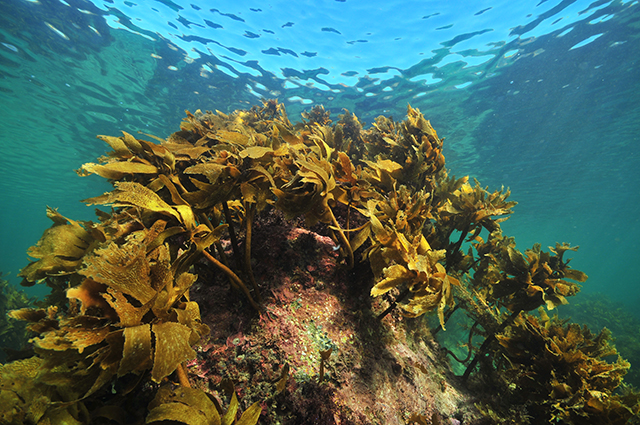
One of the ways to naturally treat candidiasis is to adhere to an anti-Candida diet. As mentioned earlier, Candida naturally occurs in the gastrointestinal tract. Because of this, a lot of natural health practitioners promote treatments based on dietary changes. A typical anti-Candida diet aims to remove sugars and yeasts from the diet and replaces foods that have antifungal properties, or that boost the immune system. Seaweed, particularly kelp, is known to contain iodine and other essential minerals and trace elements. Thus, it is often recommended to be part of a dietary treatment for candidiasis.
Kelp has been suggested to be part of a method against Candida and weight gain by Paul Pitchford in his book, “Healing with Whole Foods: Asian Traditions and Modern Nutrition,” which was published in 1996. He cited that iodine in kelp has an extra action on the thyroid, which in turn, regulates metabolism. In addition, he cited that the abundance of selenium in kelp is important in restoring immunity, which is often compromised in cases of Candida overgrowth.
Iodine is a mineral that is potently effective against many pathogenic microbes, such as fungi and yeasts. Povidone-iodine has been proven to be effective against candidiasis. In addition, it is deemed as a cost-effective alternative to more expensive antifungal treatments in developing countries. Furthermore, iodine-based treatment is also proven to be effective against mutating strains of Candida.
Unfortunately, using kelp for the treatment of Candida should be used with caution. Iodine has a known effect on the thyroid gland, and an excess can result in potentially serious conditions of either hypothyroidism or hyperthyroidism. Patients with thyroid problems are also not advised to take kelp. Some studies have revealed that too much dietary kelp can cause thyrotoxicosis. (Related: Which herbal medicines demonstrate the best anti-Candida activity?)
Here are other foods that have been shown to treat fungal and yeast infections:
- Aloe vera: Aloe vera gel may prevent the growth of Candida in the mouth and ward off infections.
- Coconut oil: Coconut oil has an abundance of lauric acid, which has been shown to combat Candida infections in various test tube studies.
- Curcumin: According to test tube studies, curcumin may eliminate Candida or at least, inhibit their growth.
- Garlic: Garlic is known to contain allicin, an antifungal substance. This substance has been shown to fight against Candida in animal and test tube studies.
- Kombucha: Kombucha tea is packed with tea polyphenols and acetic acid. These two substances have been shown to destroy Candida in test tube experiments.
- Pomegranate: A test tube experiment suggested that the plant compounds in pomegranate are helpful in fighting Candida.
- Probiotics: Probiotics, such as Lactobacillus, may decrease Candida growth and protect against infections.
Although Candida is generally not fatal, it can spread and eventually reach the bloodstream — which is why it should not be left untreated. Once the fungus starts circulating throughout the body, it can harm vital organs like the brain and heart, and result in more serious complications. Watch out for these seven symptoms of Candida overgrowth and treat it as soon as possible:
- Digestive problems
- Joint pain
- Oral thrush
- Recurring genital or urinary tract infections
- Sinus infections with symptoms such as a runny nose, nasal congestion, loss of smell, and headaches
- Skin and nail fungal infections
- Tiredness and fatigue
Read more news stories and studies on natural treatments for candidiasis by going to AlternativeMedicine.news.
Sources include:
Please contact us for more information.























